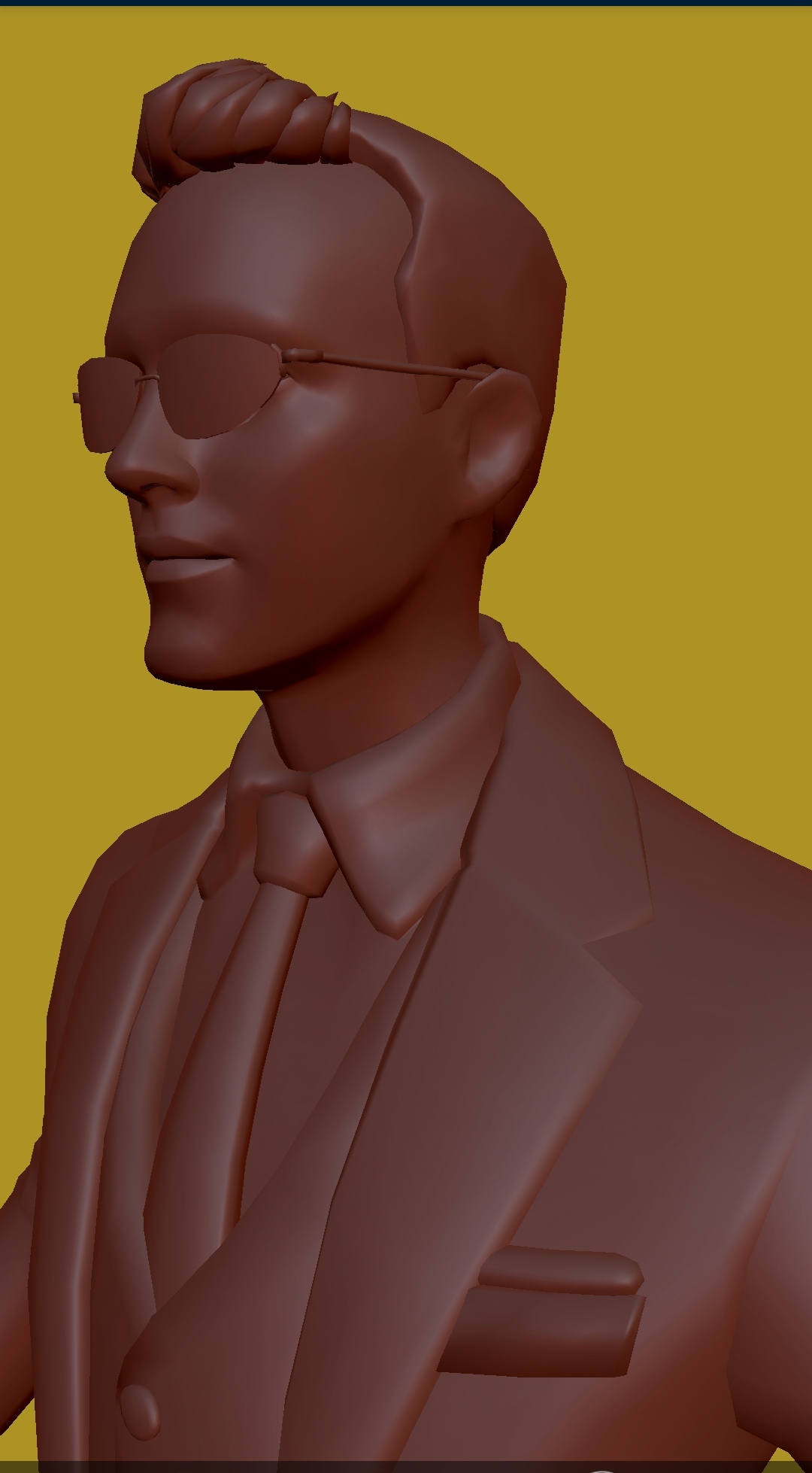I bought a laptop yesterday, it came pre-installed with Windows 11. I hate win 11 so I switched it down to Windows 10, but then started considering using Linux for total control over the laptop, but here’s the thing: I keep seeing memes about how complicated or fucky wucky Linux is to install and run. I love the idea of open source software and an operating system without any of the bullshit that comes with Windows, but most of the open source stuff I have is on my android and fairly easy to install. Installing and using Linux just feels like it’ll be a whole different beast that’ll eat up most of my time and I’m kind of intimidated by it.
TL;DR Linux scawy, how does a barely computer literate scrub like me who’s used nothing but windows since the dawn of their life get started with Linux?
Distro choice doesn’t matter. Alternately, just use Debian.
It’s hard to use a different computer and nothing will make that easier. If you’ve ever been plopped down in front of a Mac you probably already know this.
Pay attention during the install process and ask questions when you don’t understand something. Don’t be afraid to bail out if you’re worried about messing something up. Make a backup so you can’t lose anything when you do mess something up.
Dual booting is what you’ll do to start with, but windows updates tend to break the system that allows you to choose Linux or windows at boot time. The first time it happens you’ll have to figure out a way to fix it.
just use Debian.
If you only get your stuff from homebrew, Distrobox of Flatpak, yes.
Debian has severely outdated packages, like 2 years old on Bookworm. I would never recommend anyone to run outdated software.
Not every software vendor publishes LTS releases. Firefox, Thunderbird all fine. But the rest is randomly frozen, and this will result in unfixed errors for years.
I get what you’re saying, but that’s bad advice for a new user. They’re already gonna be having to relearn how the computer works and how to fix stuff that breaks/make it do what they want.
It’s more important to have a broadly supported and used system with ample documentation in that situation than it is to have the most recent packages.
It is important that you get fixes to packages that occured in the last like 2 years.
It is generally not really nice to run outdated software, even though it works kinda well.
If you use Debian you really need to use Flatpaks, and Mozillas PPA for regular Firefox. Then yes, probably a good OS.
I started on MX Linux because some strange Distrowatch bump. My IT support told me my Nextcloud version was outdated, and I didnt know Flatpak back then.
I agree that some stuff has gotta stay up to date, I guess I see that more as part of learning how the system works and how to break it/weld shit onto it problem instead of starting from a rolling release.
Dont know if I understood that sentence.
Testing packages is fine. But randomly stopping updates from upstream maintainers makes no sense. If you develop the software you can freeze packages. Or if upstream has dedicated LTS/ESR variants. But not if you dont.
Now I’m not sure I’m the one who understands!
I was saying that it’s better for a new user to come to the understanding that their system has its own version of everything and learn how to work around that when they need to rather than start from a rolling release where everything is as new as possible.
I mean software devs release software when it is ready. Fedora also is semi-rolling and especially the older release has some form of held back packages.
But knowing “my distro ships packages with some random frozen number and these issues will simply not be fixed in a long time” is not really helpful.
Also, people dont know this from anywhere. Android, macOS, Windows all have separated software that is officially maintained and uses the latest stable version. Only Linux distros use this strange packaging form.
So I think using Flatpaks is way better, as they are often officially maintained. A lot of them are not, but they manage the separation from the system very well, so you actually run the latest versions without any chance to break the system.
It depends on the package really. Sometimes you’re better off without the fixes that occurred in the last 2 years if it means avoiding the new bugs in the last 2 years.
IMO the more you try to stick to the latest releases, the more important it is to continue to stay updated. but every upgrade is a chance for new bugs or just breaking changes, so for new users starting with a stable distro is a good choice.
… except for browsers, where you both need the newest features but REALLY need the newest fixes.
- Download Mint
- Download VirtualBox
- Setup a Mint VM
- Get used to it (this is a long step, you’re free to try other distros, take your time)
- Download Rufus, install a Linux ISO of your choice to the USB
- Shrink Windows’ partition
- Turn off Secure Boot and RAID in your BIOS (steps vary by laptop/motherboard manufacterer)
- Boot your USB (try booting it in EFI mode instead of BIOS mode first, if you can)
- Follow the install instructions to install it alongside Windows
I gave what I think are the easiest and most beginner friendly instructions (Mint over Debian, Endeavour, Fedora or Ubuntu for example). Not all are the best suggestions (I suggested VirtualBox over QEMU and Rufus over Ventoy), I recommended you to go with your own preferences if you have any
If you run into any problems, this Lemmy community, the Ubuntu SO (also for non-Ubuntu questions, everyone is there) and the Mint Forums for Mint related questions are always there for you, don’t be afraid to ask and “don’t ask to ask”
;-)Good luck!
An excellent place to start is https://linuxjourney.com/ to get you started!
It does not matter much which distro you choose, as long as you choose a bigger distro. They are all well supported linux systems. Use a live USB. You do not have to install it, you can plug it in and use it. Or, install via a virtual machine.
Check out Linux Mint or Fedora, ez pz
Fedora’s installer can be confusing for new users and you need to know some technical terms (3rd party repos, Flathub etc) to set it up
The installer is actually pretty easy, even though a bit strange in some parts, really stable.
Like, better than Calamares in my eyes.
But yes, on Fedora you basically need
flatpak remote-delete -y fedora flatpak remote-add flathub https://dl.flathub.org/repo/flathub.flatpakrepoAnd on NVIDIA good luck, I would honestly just use uBlue there.
Installing linux is actually very easy and painless depending on your distro choice. What do you need your computer to do? Your choice of distro would depend on the answer to that question so we cant advise any further.
@ComicalMayhem what do you plan to use it for?
Just download Balena Etcher (it’s the easiest USB flashing tool), flash a Linux Mint .iso file to a flash drive using it and boot from it like you do with Windows installers. Unlike Windows, Linux can work in “demo mode” straight from the USB without installing to the hard drive. It may be slow in this mode but it should give you an idea of how Linux looks and feels. If you like it, double click the “Install Linux Mint” button in the top left corner and proceed with installation. Other distros usually have the installation icon on the same place or somewhere in the “Start menu” so you shouldn’t have hard times finding it in case you decide to try another distro
On Windows, Rufus is better. On Linux, use Impression Flatpak, or the KDE IsoWriter, or FedoraMediaWriter, all better than BalenaEtcher.
Rufus has much more than 3 buttons and Etcher worked fine fir me
Its an electron app and has ads. But for sure it works.
Fedora media writer also has only a few buttons and has mac and windows versions too.
Absolute beginners shouldn’t worry about electron too much imo.
Unfortunately I couldn’t properly try Fedora media writer because the iso download speed with it was at like 300 kb/s so I can’t say anything about it.
Just download the iso from your browser? Strange bug though.
Strange that the download limit was so slow, I’ve never had that happen. You can download ISOs from a browser to use in the utility, however, and Fedora has done a good job of simplifying it down to a fairly identical user experience as Etcher
Well, looks like you know how to format a PC. Then you already did 90% of the dirty work of installing and using a Linux.
Choose a friendly-linux distro and you’ll be fine. I suggest you to try
Arch (I’m joking!)Linux Mint, Fedora, PopOS or Zorin OS.I think PopOs would be really easy!
I really like System76s work so even though never used PopOS it is very likely fine.
But Zorin, hell no. It is a randomly patched outdated GNOME and their installer is Buggy.
Just use Fedora with Dash to panel and you have a better experience.
You don’t have to install Linux if you are not ready for it. You can test it without installing by using Linux live distributions. With Ventoy you can have 10 or 20 different Linux distributions on one USB stick and test them to see how well your laptop works with it and which flavors you would prefer.
Note that what you will experience is just the Desktop, as the details of the distributions are more “which one has less errors over time and not outdated or unstable packages”?
Hello and welcome to the club! It depends on your skill level. For some it can be very difficult an OS, Linux or no.
I’d recommend practicing on a VM first to verify your technical chops.
Step 1: Download virtualbox and create a new Linux virtual machine with 30 GB of disk space.
Step 2: Download a Linux ISO and mount it in the VM.
Step 3: Maximize the VM window and install Linux.
Step 4: Play around with your new Linux installation as though it were your real OS.This will be the closest to bare metal install when compared to running it from USB. USB live tend to feel laggy, because of the bus, but in a VM, it’s just like bare metal (almost) minus the “going all our” part.
Try many different distros and DEs before you make your choice.
Try atomic distros too, they may or may not be your cup of tea.
Go crazy on a VM. If you don’t like it, nuke it, try again with something else.
The only problem is the insane amount of options, which is also what makes this so much fun.
Did you install Windows 10 yourself from scratch? If you managed to do that you should be able to handle most Linux installs as well. I would go so far to say that generally Linux is easier to install than Windows nowadays. Go with Mint or OpenSUSE or Ubuntu and you should be all right.
If you have nvidia graphics that might give you trouble in the form of one extra package to install. If you have Intel or AMD graphics you shouldn’t expect any trouble at all.
The biggest difference between Windows and Linux is that you generally don’t download apps and drivers from websites but use your package manager to install stuff. Similar to app stores on smartphones. And unless it’s nvidia all drivers are already built in.
You can download live Linux images that boot directly from USB to try them out without installing. Often the live image is the same one you can then use to install Linux, if you want to.
Mint
I definitely found Linux Mint the easiest version to switch to, coming from Windows. All the menus and icons were basically where I expected to find them. I couldn’t have cared less about Wayland support, I just wanted to do basic tasks and for my printer to work, and Mint did that out of the box.
Linux is easier to install than Windows nowadays.
This.
Go with Mint or OpenSUSE or Ubuntu
Not this. Mint maybe, even though their Desktop looks dated and is not Wayland ready. But OpenSUSE is strange (what to use, Leap? Good luck with outdated packages; Tumbleweed? Well you are now rolling) and Ubuntu is basically dead.
Ubuntu is basically dead
It’s dead for hardcore nerds that care about such things as snaps and such. But in the corporate world, it’s very much alive. I literally just got done installing an Ubuntu-based NVR from Wisenet for a store’s CCTV system.
Ubuntu is basically dead
LMAO
Ubuntu is dead
Kinda showed your ass with this one
Try Linux Mint. You set it up on a USB drive, and you can try using it before you install it. So load it up, and try doing a few things you’d normally do (check email, etc.). This way, you can get your feet wet without committing fully. If you find you like it, you can do an installation (and it doesn’t require any fancy terminal stuff).
If the disk is not encrypted you can go wubi, it’s a windows app that will install Ubuntu in a virtual disk. You can use it forever without touching windows and also upgrade it with newer Ubuntu version: Check under assets here https://github.com/hakuna-m/wubiuefi/releases
For me to give better recommendations or help than what other people are saying, I’d need more info, I can help you here, but id rather help you on a chat app, I’m available on matrix, signal and discord.
The extra info I’d need is stuff like whats the model of your PC, what do you use it for, what are your preferences, ect.
Like others have said, definitely try a few distributions out via USB before committing. Also, you can dm me if you need help beyond what you find online.
Good luck, and have fun!













